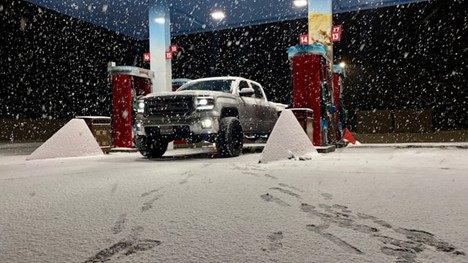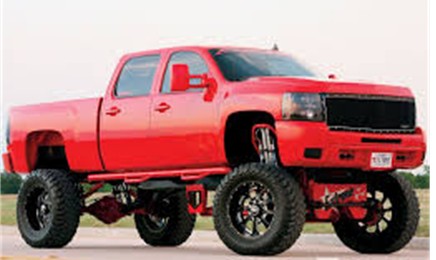
When customizing a vehicle for performance, visual impact, or off-road readiness - it’s easy to zero in on the big-ticket upgrades like suspension kits, aggressive tire sizes, and standout wheel styles. But one often-overlooked element that plays a major role in a successful build is proper balancing and fitment.
In South Carolina, where lifted trucks are a staple on highways, trails, and weekend showdowns, attention to these finer details isn’t just recommended, it’s essential. How your wheels and tires are balanced and fitted affects everything from ride quality to long-term durability and safety. Investing in the right wheel and tire packages from the start can ensure a smoother ride, better handling, and fewer mechanical headaches down the road.
Fitment refers to how your wheels and tires sit in relation to your truck’s suspension components, wheel wells, and fenders. It includes:
Fitment becomes especially important when you increase your truck’s ride height. The larger tires that often follow a lift can rub on suspension parts or fenders if the wrong offset or size is selected. A bad fitment setup can also drastically change the handling characteristics of your vehicle.
Why It Matters:
Even if your truck looks aggressive and lifted, poor fitment can ruin the experience every time you drive - or worse, lead to expensive repairs.
Once you’ve picked your wheels and tires, balancing is the next critical step. In lifted trucks, this process becomes even more important due to the sheer size and weight of aftermarket wheels and tires. Unlike factory setups, these components are often heavier and more uneven, making imbalances more noticeable.
Balancing ensures that your wheels and tires rotate smoothly at high speeds, preventing vibrations, uneven wear, and stress on suspension components.
What Happens When You Skip Balancing:
Reduced ride comfort and off-road performance
This is especially relevant for lifted builds in South Carolina, where highways like I-95, I-26, and backroads alike test a vehicle’s smoothness. If your ride shakes at 65 mph, it might not be your lift kit - it’s probably your balance.
Lifted trucks are part of the lifestyle in many parts of South Carolina. From beach towns like Myrtle Beach to the Appalachian foothills near Greenville, trucks are used for recreation, daily driving, hunting, and off-road adventures. This variety of uses means your truck needs to be more than good-looking - it needs to perform across all conditions.
Considerations Specific to SC Drivers:
All of these emphasize the need for perfect fitment and precise balancing. A lifted build that’s not dialed in will be more prone to issues in the heat, humidity, or rough terrain. And if you’re heading to events like truck meets in Charleston or the annual Myrtle Beach Jeep Jam, looking sharp and riding smooth is non-negotiable.
Solution: Always consult a fitment guide or shop professional when selecting tire size after a lift. You may need to trim fenders or adjust bump stops for oversized setups.
Offset determines how far the wheel sticks out. Too much positive offset = rubbing. Too much negative = excessive "poke" and stress on suspension.
Solution: Aim for a balanced offset that matches your lift height, tire width, and usage goals.
Solution: Use a shop that specializes in lifted builds and large off-road tires. Not all tire shops have the equipment or expertise to balance 35s or 37s accurately.
If you’re lifting your truck, make sure you’re working with a local shop that specializes in custom builds - not just basic alignments and oil changes. Fitment and balancing are not “set it and forget it” processes. They require experience, attention to detail, and often custom adjustments.
What to Look for in a Shop:
In regions like the Lowcountry or the Upstate, where off-road performance is often a priority, many shops offer post-lift inspections, re-balancing, and tuning. These are the places you want to work with - not big-box chains.
Lifting a truck is an investment, one that goes beyond looks. Whether you’ve spent $2,000 or $15,000+ on your build, protecting that investment starts with details like balancing and fitment.
The Benefits of Getting It Right:
Improved resale value and buyer confidence
Even small issues - like a ¼” misalignment or ½ oz of imbalance - can snowball into expensive repairs and chronic ride discomfort over time.

In the world of lifted trucks, the details do matter.
You wouldn’t cut corners on your lift kit, shocks, or drivetrain, so why gamble on wheel fitment or tire balance? These two factors directly affect your safety, handling, and long-term satisfaction with the build.
Whether you’re tearing through red clay trails outside Columbia or cruising down I-20 toward Florence, a dialed-in setup means fewer vibrations, better control, and maximum enjoyment.
So, the next time you upgrade your truck, don’t just focus on going higher. Focus on going smarter.
Because balancing and fitment aren’t just details, they’re the foundation of a build that performs as good as it looks.